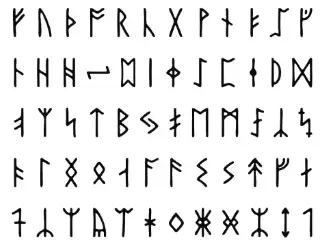Before we start talking about number representation systems, bases, hexadecimal systems, and all that jazz 🐠, we should briefly talk about what a number is.
In modern mathematics, defining a number is very complicated. There are complex numbers, matrices, tensors, vector subspaces… well, it’s a vast topic.
Fortunately, for this course, a more traditional explanation will suffice. Let’s say that:
A number is an abstract concept that serves to identify quantities and measures.
Or, in colloquial terms, a number is what naturally appeared when someone 4,000 years ago started counting sheep (and probably fell asleep).
Later, the concept of zero, negative numbers, fractional numbers were added… and well, we all more or less know this story.
Number Representation
Let’s say we “more or less” know what a number is, and that it’s an abstract concept. But, we have to find a way to represent this number (for example, because we need to store it, write it, or transmit it).
Here I emphasize, and I’m going to be a bit annoying about it, that we must not confuse a number with its representation. A number has no form, it’s a concept, it’s abstract.
To make it clear, this:

is NOT a house. It’s an image that represents a house. Nor is the word house a house.
The real house is where you live. It’s a big thing, with walls, you can go inside it, you pay a mortgage for it… that’s the real house (the other things are just representations of the house).
In the same way, 1,270,000 is not a number, they are symbols that represent a number. But we are so used to it that we end up thinking it IS the number. But it’s not, they are just strokes to write the number (just like the picture of the little house or the word house).
How to Represent a Number
Imagine that no one has ever represented a number before, and we have to invent a way to represent them. There are infinite ways to store numbers. We could start inventing ways and, literally, never finish.
This problem was already encountered thousands of years ago by the first people who dedicated themselves to this. In fact, we know that humanity has used ways to represent numbers (for example, Roman numerals or Babylonian numeration).
But let’s continue with inventing our own way to represent numbers. Let’s start with the most obvious one. Let’s put marks for each number. For example “dots”. So 1, one dot. 3, three dots.

Okay, but it wouldn’t be very practical to have so many dots. Imagine having to count 5,374 on a sheet of paper to know what number it is. This doesn’t work very well, does it?
So let’s use symbols instead. Let’s create a different symbol for each number. That way we don’t have to count so many dots. But we have another problem… we’re not going to memorize 5,374 symbols, are we?

There lies the problem with numbers, there are so many of them! (infinitely many).
- If I use positions, I’m going to have many positions
- If I use symbols, I’m going to have many symbols
Neither option works alone. So something in between had to be invented.
Positional Notation
How do we avoid having many, many positions, and many, many symbols? With positional notation, which is the system you are used to using.
Positional notation uses both symbols and their position to represent the number
Let’s see how it works,
- We define a limited set of symbols
- When we increment the numbers, we move from one to the next
- If we run out of symbols, we put the same symbol to the left.
For example, imagine we had chosen these symbols 🔵,🔺, 🟩,⭐. Our system would work like this.
I’ve put the equivalent in the decimal system below, because it’s easier for us to understand. But the number is the same, only the representation is different.
Decimal System
Finally, we arrive at the decimal system, which is the positional notation system we are accustomed to. As we know, the base of the system is 0, 1, 2, 3, 4, 5, 6, 7, 8, and 9 (that is, 10 symbols, base 10).
Why were 10 symbols chosen and not 7 or 12? Because potato, absolutely for no reason. Well yes, look at your hands and count your fingers, that’s where it comes from 🖐️.
Also, 10 is a number of symbols that is comfortable for us to memorize. Working with 500 symbols would make operations very difficult, due to our memorization capacity.
But apart from this, we could have chosen any other base, or any other set and quantity of symbols. Now we would see it as the most normal thing in the world (just like what happens to us with the decimal system).
What happens is that we are so used to working in the decimal system that any other representation “confuses us”. But keep in mind that any of these representations is as valid as any other.
